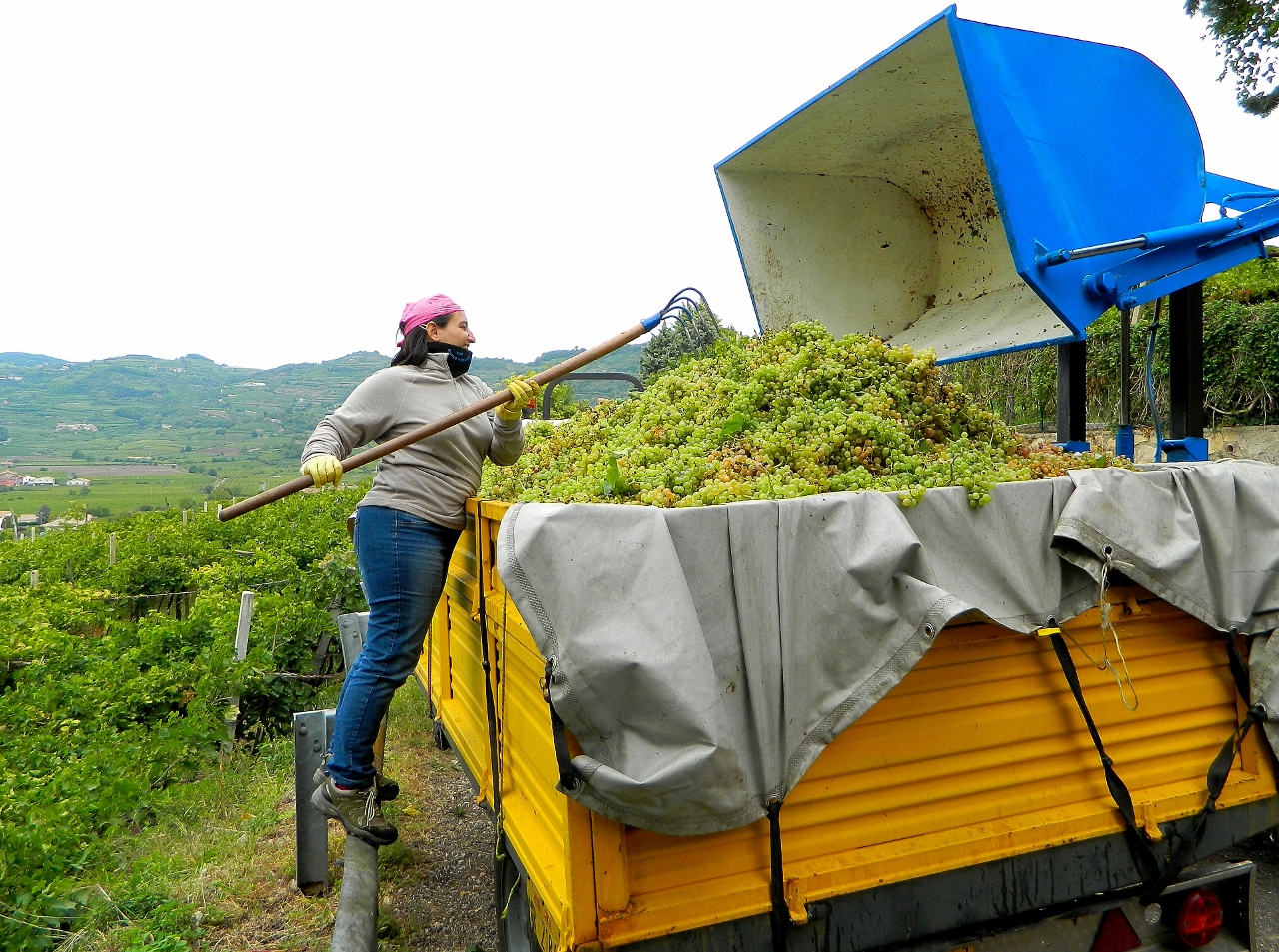Soave is, for us, bottom-shelf wine. Why would you? It normally sits in supermarkets alongside the dreadfully Anglicised brands of ‘Blue nun’ and ‘Black tower’, Germany’s left-overs and passed off onto unsophisticated Brits looking for ‘a cheap plonk’.

We didn’t expect much from the place, but it sounded like it had a good aire. ‘Snopper’ our increasingly questionable sat-nav got tangled again and squeezed Bertha through a metre thick brick wall on a blind corner against oncoming traffic, into a simply breath taking medieval hillside village.
Once parked at the aire alongside the story-book crenelated town walls we climbed up to the heights of the medieval Castello, stronghold of Verona’s powerful and paranoid Scaligeri family.
In the castle’s vineyards a happy couple with a small dumper truck were busily loading their harvest of white grapes. Cheerfully they told us in Italian that they farmed 40 hectares and the current load on board would make maybe 30 bottles of ‘Classico’. They seemed elated by their harvest, and our English interest, and gave us a bunch of their grapes.
Munching on the gorgeously sweet fruit and wending our way down steeply to the centre of the village we went to a winery for a tasting of Soave and for information about its production. We discovered we had had the good fortune to meet the winemakers of La Rocca, producers of Soave of international renown.
Who’d have known it from their casually happy and down-to-earth manner? A quick revision of our attitude to Soave wine was called for, and we soon discovered the local wine to be enjoyably light, fresh and very elegant!
At sunset, we toasted the brick walls and towers of the town as they turned pink against the darkening green of the yew trees planted on terraces circling up and above us. It was magical. The aire gifted a quiet and safe night’s sleep amongst five other touring vans and in the morning we left feeling delighted to have seen this unassuming and very special corner of the Veneto.

We broke up the journey on the wretched A4 with a stop in Vicenza. Again, not knowing what to expect, we were delighted by the beguiling architecture of this small and unpretentious university town. Unesco has declared it to be a World Heritage Site for its 23 buildings attributed to the sixteenth century Italian master, Palladio.
Palladio’s style was based on classical form and the buildings listed against his name share a look that features white Piovene stone, Corinthian and Ionic columns, columned walkways and arched loggias. As an ensemble its effect is to make any stroll around the centre a dreamy one.
We did rather question the legitimacy of the claims of ‘Pallladian’ architecture. Very little is actually known about the man other than some charmingly informative ‘facts’ such as his father was Pietro della Gondola and his mother ‘la zotta’ (Limping Martha). His birthplace, his home, his death, his burial place and even his ‘features’ are unknown. This despite several statues purporting to be Palladio around the place.
It was all a good chuckle!
In the light-filled Chiesa di Santa Corona we admired two renaissance masterpieces by Bellini and Veronese. A bright red bird took part in Christ’s baptism and the brightly gowned Magi worshipped the nativity in a crowded audience of interested horses, cattle, sheep and camels.
We joined local workers in suits for a cheap and tasty pasta lunch at a crowded trattoria before heading to the palatial Gallerie di Palazzo Leoni Montanari for an afternoon admiring misty landscapes of Venice by the Venetian masters and social scenes of Venetian families and disturbingly beaked and black garbed patricians by Pietro Longhi. Upstairs were rooms of richly painted and jewelled Russian icons.
As we left on the bus back to our noisy road and rail-side aire, large groups of students boisterously swung out of their palatial campus by the riverside. What a place to live and study! Vicenza, like Soave, was a delightful surprise and a place to hold in the memory.











